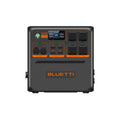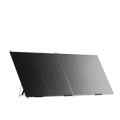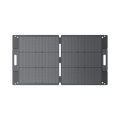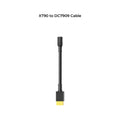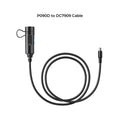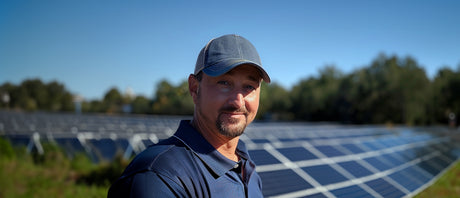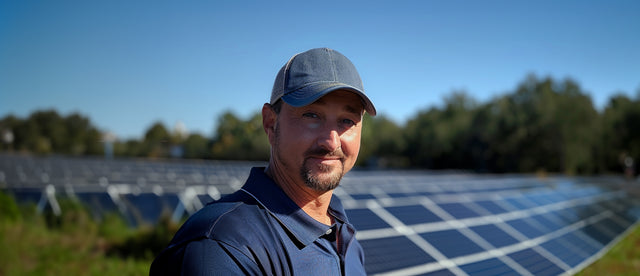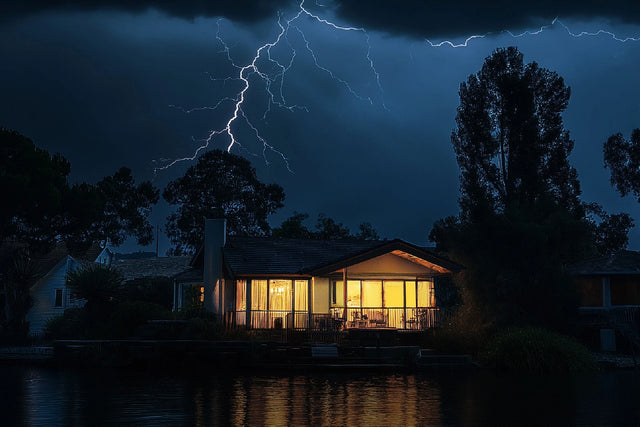Electricity is an essential element of modern life, powering everything from our homes to our workplaces. However, have you ever noticed that your electricity bill varies from month to month? One of the reasons for this could be the fluctuation of peak and off-peak times for electricity usage. These hours not only affect our bills but also have a significant impact on the overall electricity system. In this article, we will explore the peak and off-peak times for electricity in three major states in Australia - New South Wales, Queensland, and Victoria - and understand why it is important for us to be aware of these timings. By the end of this article, you will have a better understanding of how electricity is priced, how peak and off-peak times work, and how you can use this knowledge to save on your electricity bills.
What does ‘peak usage’ mean on my bill?
Single rate tariff: A single rate tariff is a pricing structure where the cost of electricity remains the same throughout the day, regardless of the time of usage. This means that the ‘peak usage’ on your bill refers to the total amount of electricity used during the billing period.
Time of use tariff: Unlike a single rate tariff, a time of use tariff has different rates for electricity usage at different times of the day. The peak usage on your bill for this tariff refers to the electricity consumption during the designated ‘peak hours’.
In most parts of Australia, peak hours for electricity usage are usually between 2pm to 8pm on weekdays. During this time, electricity demand is at its highest as households and businesses are using appliances and devices such as air conditioners, washing machines, and computers. Due to the high demand, electricity providers charge a higher rate for electricity consumption during peak hours.
The specific peak hours and rates may vary depending on the state or territory. In New South Wales (NSW), peak hours are from 2pm to 8pm on weekdays, while in Queensland (QLD) and Victoria (VIC), peak hours are from 4pm to 9pm on weekdays.
It is important to note that the time of use tariff also has ‘off-peak’ and ‘shoulder’ hours, where the rates for electricity consumption are lower. Off-peak hours are usually during the night and early morning, while shoulder hours are the periods before and after peak hours.
Let’s take a look at an example of a bill for a household in NSW with a time of use tariff.

Example bill for a NSW household with time of use tariff
Usage charges:
Peak hours: 900kWh at 35 cents/kWh = $315
Shoulder hours: 400kWh at 25 cents/kWh = $100
Off-peak hours: 300kWh at 15 cents/kWh = $45
Total usage charges: $460
In this example, the peak usage on the bill is 900kWh, which is the highest usage during the billing period. The household used 400kWh during shoulder hours and 300kWh during off-peak hours, resulting in lower electricity costs for those hours.It is also worth noting that the rates for electricity consumption during peak hours are significantly higher than off-peak and shoulder hours. This is because electricity providers want to encourage households to shift their electricity usage to off-peak and shoulder hours, which helps to reduce the strain on the electricity grid during peak hours.
Why is it important to be aware of peak and off-peak hours?
Understanding peak and off-peak hours can help households manage their electricity usage and save money on their bills. By using appliances and devices during off-peak or shoulder hours, households can take advantage of lower rates and reduce their overall electricity costs.Another benefit of being aware of peak and off-peak hours is that it helps to reduce the strain on the electricity grid. By using electricity during off-peak hours, households can help to balance the demand for electricity throughout the day, which can ultimately lead to more stable and reliable electricity supply.
In some cases, electricity providers also offer discounts or incentives for households that shift their usage to off-peak or shoulder hours. This can further help households save money on their bills.
Peak and off-peak hours play a significant role in determining the electricity usage charges on your bill. With a time of use tariff, peak usage refers to the electricity consumption during designated peak hours, which are usually during the late afternoon and evening. Understanding these peak and off-peak hours can help households manage their electricity usage, reduce their bills, and contribute to a more stable electricity grid. It is important to check with your electricity provider for specific peak hours in your state or territory and take advantage of any discounts or incentives offered for off-peak or shoulder usage.
How do I know if I am on peak and off-peak electricity rates?
When it comes to electricity usage, many people are not aware of the concept of peak and off-peak times. But understanding these rates is crucial as it can have a significant impact on your electricity bill. Peak and off-peak hours refer to the specific times of the day when the demand for electricity is high or low, respectively. In this article, we will discuss peak and off-peak times for electricity in New South Wales (NSW), Queensland (QLD), and Victoria (VIC). But first, let's understand the meaning of peak and off-peak rates.Peak Hours
Peak hours refer to the time of the day when there is a high demand for electricity. These hours are usually during the day when most people are using electricity for their daily activities, such as cooking, using appliances, and heating or cooling their homes. In general, peak hours are between 2 pm to 8 pm on weekdays. During this time, the demand for electricity is high, and as a result, the electricity providers charge higher rates for the energy used.
Off-Peak Hours
Off-peak hours, on the other hand, are the times of the day when the demand for electricity is low. These hours are usually at night when most people are asleep, and there is a decrease in overall electricity usage. Off-peak hours are typically between 10 pm to 7 am on weekdays and all day on weekends and public holidays. During off-peak hours, the electricity providers charge lower rates for the energy used.
Peak and Off-Peak Times in NSW
In NSW, peak hours are from 2 pm to 8 pm on weekdays. These hours are when the electricity usage is at its highest, and the prices are at their peak. On the other hand, off-peak hours in NSW are between 10 pm to 7 am on weekdays and all day on weekends and public holidays. It is essential to note that NSW has different peak and off-peak rates for households and small businesses. For households, the peak and off-peak rates are different for the summer and winter season. The peak rates during summer are from 2 pm to 8 pm, while during winter, the peak hours are from 5 pm to 9 pm. The off-peak rates, however, remain the same throughout the year.
| Ausgrid Energy Plans in NSW | Energy Demand | Charge Rates |
|---|---|---|
| Peak | 2pm-8pm weekdays | High |
| Shoulder | 7am-2pm weekdays 8pm-10pm weekdays 7am-10pm weekends |
Medium |
| Off-peak | 10pm-7am daily | Low |
Peak and Off-Peak Times in QLD
In QLD, the peak hours are from 3 pm to 9 pm on weekdays, while the off-peak hours are from 9 pm to 7 am on weekdays and all day on weekends and public holidays. Similar to NSW, QLD also has different peak and off-peak rates for households and small businesses. For households, the peak rates are from 4 pm to 8 pm, while for small businesses, the peak rates are from 3 pm to 7 pm.
| OriginEnergy Plans in QLD | Energy Demand | Charge Rates |
| Peak | 4pm-8pm weekdays | High |
| Shoulder | 7am-4pm weekdays 8pm-10pm weekdays 7am-10pm weekends |
Medium |
| Off-peak | 1am-6am daily | Low |
Peak and Off-Peak Times in VIC
In VIC, the peak hours are from 3 pm to 9 pm on weekdays, while the off-peak hours are from 10 pm to 7 am on weekdays and all day on weekends and public holidays. VIC also has different peak and off-peak rates for households and small businesses. For households, the peak rates are from 3 pm to 9 pm, while for small businesses, the peak rates are from 3 pm to 7 pm.
| OriginEnergy Plans in VIC | Energy Demand | Charge Rates |
| Peak | 3pm-9pm daily | High |
| Shoulder | NA | Medium |
| Off-peak | 9pm-12am daily 12am-3pm daily |
Low |
How to Know Which Rate You Are On
Now that we have discussed the peak and off-peak times for electricity in NSW, QLD, and VIC, the question arises, how do you know which rate you are on? The best way to determine which rate you are on is by checking your electricity bill. Most electricity providers mention the peak and off-peak rates on their bills, along with the times when these rates are applicable. You can also contact your electricity provider for more information about your rates.
peak and off-peak times for electricity are essential to understand as they can significantly impact your electricity bills. It is crucial to be aware of these rates and manage your electricity usage accordingly to save money. Make sure to check your electricity bill and be mindful of your energy consumption during peak hours to avoid high charges.

Peak and off-peak electricity times
In today's fast-paced world, electricity has become an essential part of our daily lives. From powering our homes and businesses to fueling our devices, electricity keeps our modern society running. However, the demand for electricity is not constant throughout the day. It fluctuates depending on the time of day, season, and region. This fluctuation in demand has led to the development of peak and off-peak electricity times, which help manage and balance the electricity grid's supply and demand. In this article, we will explore the peak and off-peak electricity times in the states of New South Wales, Queensland, and Victoria and how they affect consumers and their energy bills.
EnergyAustralia peak and off-peak electricity times
EnergyAustralia is one of the largest energy retailers in Australia, serving over 1.7 million electricity customers across the country. Like many other energy retailers, EnergyAustralia offers different electricity rates for peak and off-peak times to incentivize customers to use electricity when it is cheaper and more readily available.
VIC (Citipower)
In Victoria, EnergyAustralia operates as a retailer under the Citipower distribution network, serving over 300,000 electricity customers. According to EnergyAustralia, peak electricity times for Citipower are between 3 pm and 9 pm on weekdays, while off-peak times are on weekends and public holidays. Shoulder times, which are a mix of both peak and off-peak, are between 7 am to 3 pm and 9 pm to 10 pm on weekdays. During peak hours, electricity is in high demand, and as a result, the rates are higher compared to off-peak hours. So, it is advisable for customers to plan their energy usage according to the peak and off-peak times to save on their bills.
NSW (Ausgrid)
In New South Wales, EnergyAustralia operates as a retailer under the Ausgrid distribution network, serving over 700,000 electricity customers. According to EnergyAustralia, the peak electricity times for Ausgrid are between 7 am and 10 pm on weekdays, while off-peak times are on weekends and public holidays. Shoulder times for Ausgrid are between 10 pm to 7 am on weekdays and between 7 am to 10 pm on weekends. Similar to Victoria, electricity rates during peak times are higher, while off-peak times offer lower rates for customers.
QLD (Energex)
In Queensland, EnergyAustralia operates as a retailer under the Energex distribution network, serving over 800,000 electricity customers. According to EnergyAustralia, the peak electricity times for Energex are between 4 pm and 8 pm on weekdays, while off-peak times are on weekends and public holidays. Shoulder times for Energex are between 7 am to 4 pm and 8 pm to 9 pm on weekdays. During peak hours, electricity demand is at its highest, and as a result, electricity rates are higher compared to off-peak hours.
It is worth noting that peak and off-peak electricity times may vary for different energy retailers, and customers should check with their retailer for specific times in their area. Additionally, some retailers offer different peak and off-peak times for customers on different energy plans. Therefore, it is advisable for customers to review their energy plans and understand the peak and off-peak times to maximize their savings.
The benefits of peak and off-peak electricity times
Peak and off-peak electricity times offer several benefits for both consumers and the energy grid. For consumers, understanding and utilizing these times can result in significant savings on their energy bills. By shifting their energy usage to off-peak times, customers can take advantage of lower electricity rates, reducing their overall energy costs. On the other hand, peak and off-peak times also help balance the electricity grid's supply and demand. During off-peak times, there is lower electricity demand, which means the grid can operate more efficiently, reducing the risk of power outages. Additionally, by reducing peak demand, the grid can avoid the need for costly infrastructure upgrades, keeping electricity prices stable for consumers.
Peak and off-peak electricity times play a significant role in managing the electricity grid's supply and demand while also offering benefits for consumers. EnergyAustralia, like many other energy retailers, offers different electricity rates for peak and off-peak times to incentivize customers to shift their energy usage. By understanding and utilizing these times, customers can save on their energy bills while also helping to maintain a stable and reliable electricity grid.
AGL Peak and Off-Peak Electricity Times
AGL is one of the largest energy retailers in Australia, providing electricity and gas services to millions of customers across New South Wales, Queensland, Victoria, and South Australia. As with any electricity provider, AGL has designated peak and off-peak times for their customers, which determine the cost of electricity consumption. In this article, we will be focusing on the peak and off-peak times for AGL customers in New South Wales, Queensland, and Victoria.NSW (Ausgrid)
In New South Wales, Ausgrid is the distribution network that supplies electricity to over 1.7 million customers in Sydney, Central Coast, and Hunter regions. The peak and off-peak electricity times for Ausgrid customers are divided into three different categories: summer, winter, and all other times.
Summer: The summer peak period for Ausgrid customers is between 2 pm to 8 pm on weekdays (excluding public holidays). The shoulder period, which is the time of the day where electricity prices are slightly lower, is between 7 am to 2 pm and 8 pm to 10 pm on weekdays. The remaining hours of the day, including weekends and public holidays, are considered off-peak.
Winter: During the winter season, the peak period for Ausgrid customers is between 7 am to 10 am and 5 pm to 9 pm on weekdays. The shoulder period is between 10 am to 5 pm and 9 pm to 10 pm on weekdays. Similar to the summer period, all other times are off-peak, including weekends and public holidays.
All Other Times: For all other times throughout the year, the peak period for Ausgrid customers is between 4 pm to 8 pm on weekdays. The shoulder period is between 7 am to 4 pm and 8 pm to 10 pm on weekdays. All other times, including weekends and public holidays, are off-peak.
QLD (Energex)
In Queensland, Energex is the electricity distribution network that services over 1.4 million customers in South East Queensland. Similar to Ausgrid, Energex also has three different peak and off-peak periods: summer, winter, and all other times.Summer: For Energex customers, the summer peak period is between 4 pm to 8 pm on weekdays (excluding public holidays). The shoulder period is between 7 am to 4 pm and 8 pm to 10 pm on weekdays. The remainder of the day, including weekends and public holidays, is considered off-peak.
Winter: During the winter season, the peak period for Energex customers is between 6 am to 8 am and 3 pm to 9 pm on weekdays. The shoulder period is between 8 am to 3 pm and 9 pm to 10 pm on weekdays. Similar to the summer period, all other times are off-peak, including weekends and public holidays.
All Other Times: For all other times throughout the year, the peak period for Energex customers is between 7 am to 9 am and 4 pm to 8 pm on weekdays. The shoulder period is between 9 am to 4 pm and 8 pm to 10 pm on weekdays. All other times, including weekends and public holidays, are off-peak.
VIC (Citipower)
In Victoria, Citipower is the electricity distribution network that services over 1.2 million customers in Melbourne's CBD and inner suburbs. The peak and off-peak times for Citipower customers are divided into two categories: summer and all other times.Summer: For Citipower customers, the summer peak period is between 3 pm to 9 pm on weekdays (excluding public holidays), and the shoulder period is between 7 am to 3 pm and 9 pm to 10 pm on weekdays. Similar to other states, all other times, including weekends and public holidays, are considered off-peak.
All Other Times: For all other times throughout the year, the peak period for Citipower customers is between 7 am to 9 am and 5 pm to 8 pm on weekdays. The shoulder period is between 9 am to 5 pm and 8 pm to 10 pm on weekdays. All other times, including weekends and public holidays, are off-peak. peak and off-peak electricity times vary depending on your state and electricity provider. It's essential to be aware of these times to save on your energy bills, especially during peak periods when electricity prices are at their highest. As a customer of AGL, make sure to plan your electricity usage accordingly to take advantage of the shoulder and off-peak periods and minimize your electricity costs.

Origin Peak and Off-Peak Electricity Times
Electricity consumption is a vital aspect of every household and business. It powers our daily activities, from using appliances to lighting up our homes. However, not all electricity usage is equal. There are certain times of the day when the demand for electricity is at its highest and lowest. These periods are known as peak and off-peak hours. The concept of peak and off-peak times plays a significant role in electricity pricing, as it affects the cost of electricity for consumers. In Australia, different states have different peak and off-peak times, and in this article, we will focus on the peak and off-peak hours for three of the most populated states- New South Wales (NSW), Victoria (VIC), and Queensland (QLD).EnergyAustralia Peak and Off-Peak Electricity Times
EnergyAustralia is one of the leading energy providers in Australia, supplying electricity to millions of households and businesses. The company has a significant presence in three states- NSW, VIC, and QLD. Each of these states has different peak and off-peak electricity times, which are determined by the local distribution networks that manage the electricity grid.
VIC (Citipower)
Citipower is the local distributor of electricity in the state of Victoria. The peak and off-peak times for this region are slightly different compared to the other states. The peak period for Citipower customers is from 7:00 am to 11:00 pm on weekdays, while the off-peak period is from 11:00 pm to 7:00 am on weekdays and all day on weekends and public holidays. The shoulder period, which is the transition between peak and off-peak, is from 7:00 am to 3:00 pm and 11:00 pm to 11:00 pm on weekdays.
NSW (Ausgrid)
Ausgrid, the local distributor of electricity in NSW, has a similar peak and off-peak schedule to Citipower. However, the peak period for Ausgrid is between 2:00 pm to 8:00 pm on weekdays, while the off-peak period is between 8:00 pm to 7:00 am on weekdays and all day on weekends and public holidays. The shoulder period is from 7:00 am to 2:00 pm and 8:00 pm to 10:00 pm on weekdays.
QLD (Energex)
Energex, the local distributor of electricity in QLD, has a different peak and off-peak schedule compared to Citipower and Ausgrid. The peak period for Energex customers is from 4:00 pm to 8:00 pm on weekdays, while the off-peak period is from 8:00 pm to 7:00 am on weekdays and all day on weekends and public holidays. The shoulder period is from 7:00 am to 4:00 pm and 8:00 pm to 9:00 pm on weekdays.
Why Do Peak and Off-Peak Times Matter?
You may wonder why the timing of electricity usage is so crucial. The answer lies in the supply and demand of electricity. During peak hours, there is a significant demand for electricity, and the supply may struggle to keep up. This results in higher electricity prices as the power companies need to produce more electricity to meet the demand. On the other hand, during off-peak hours, when the demand is low, the supply is ample, and the electricity prices are lower. The shoulder period falls in between, with moderate demand and electricity prices.One of the key reasons for having different peak and off-peak times in different states is to balance the demand for electricity across the country. For instance, when it is peak time in QLD, it may be off-peak time in VIC. This helps in reducing the strain on the electricity grid and ensuring a consistent supply of electricity throughout the day.
The Impact on Electricity Bills
Peak and off-peak hours not only affect the overall cost of electricity but also how much you pay on your electricity bill. Most energy providers have different rates for peak and off-peak electricity usage. For example, EnergyAustralia's 'Anytime' plan charges a higher rate for electricity usage during peak hours compared to their 'Off-Peak' plan, which offers a lower rate for off-peak usage. Therefore, it is essential to be aware of your energy provider's peak and off-peak times to make informed decisions about your electricity usage and save on your bills.How Can You Make the Most of Off-Peak Hours?
Knowing the off-peak hours can help you save on your electricity bills. Here are some tips to make the most of off-peak hours:1. Use appliances such as washing machines, dishwashers, and clothes dryers during off-peak hours.
2. Set your pool pumps and hot water systems to run during off-peak hours.
3. Charge your electric vehicles during off-peak hours.
4. Consider switching to an energy plan that offers a lower rate for off-peak usage.
peak and off-peak electricity times play a significant role in determining the cost of electricity in Australia. Understanding your state's peak and off-peak schedule and making simple changes to your electricity usage can help you save on your bills. Take advantage of off-peak hours and make a positive impact on the environment and your wallet.
Peak vs off-peak electricity prices
In Australia, the cost of electricity varies based on the time of day and the demand for power. This is known as peak and off-peak electricity prices. The prices during peak hours are significantly higher than off-peak hours, making it important for consumers to monitor their energy usage and take advantage of off-peak hours to save money.As per the NSW Government, peak hours in New South Wales (NSW) are between 2 pm to 8 pm on weekdays, while off-peak hours are between 10 pm to 7 am. The peak electricity price in NSW is currently set at 27.1 cents per kilowatt-hour (kWh), while off-peak prices are as low as 11.3 cents per kWh. This means that during peak hours, consumers are paying almost two and a half times more for electricity than during off-peak hours.
Similarly, in Queensland (QLD), peak hours are between 3 pm to 9 pm on weekdays, and off-peak hours are between 9 pm to 7 am. The difference in prices is even more significant in QLD, with peak electricity costing 33.6 cents per kWh, almost three times the off-peak price of 11.2 cents per kWh.
In Victoria (VIC), peak hours are between 3 pm to 9 pm on weekdays, and off-peak hours are between 10 pm to 7 am. The peak electricity price in VIC is 27.9 cents per kWh, while off-peak prices are 14.5 cents per kWh. This means that during peak hours, consumers in VIC are paying almost double for electricity compared to off-peak hours.
So why do prices vary so much between peak and off-peak hours? The answer lies in the demand for electricity. During peak hours, when most people are using power, the demand for electricity is high, causing the cost to go up. On the other hand, during off-peak hours, when the demand is low, the cost is significantly lower.
This is where BLUETTI AC500 + B300S comes into play. With its 5,000W rated power and expandable capacity from 3,072Wh to 18,432Wh by adding B300S batteries, this energy system can help consumers take advantage of off-peak hours and save on their electricity bills. By utilizing the off-peak electricity during low demand periods and using it during peak hours, consumers can potentially save a significant amount of money.
Moreover, the LiFePO4 battery used in BLUETTI AC500 + B300S has a cycle life of 3,500+, meaning it can be charged and discharged over 3,500 times to 80% capacity. This long life cycle ensures that the energy system can be used for years to come, providing continued savings on electricity bills.
With the Smart APP control feature, consumers can monitor their energy usage in real-time and make adjustments to optimize their energy consumption during peak and off-peak hours. The system also offers six ways to recharge, including AC, solar, car, generator, lead-acid battery, and dual charging, making it versatile and convenient for users.
Furthermore, with 16 versatile outlets, BLUETTI AC500 + B300S can power 99% of devices, making it an all-in-one solution for household energy needs. It also has a 24/7 UPS home backup, ensuring that even during power outages, households can continue to use their essential devices.
peak and off-peak electricity prices in NSW, QLD, and VIC show a significant difference, with peak prices being almost three times higher than off-peak prices. With BLUETTI AC500 + B300S, households can take advantage of off-peak hours and save on their electricity bills. Its high power capacity, long battery life cycle, and versatile features make it an ideal choice for households looking to reduce their energy costs.
1. What are electricity peak hours in NSW, QLD, and VIC?
What are electricity peak hours in NSW, QLD, and VIC?
Electricity peak hours refer to the times of the day when there is a high demand for electricity. This demand is typically driven by residential and commercial activities such as heating, cooling, and the use of electrical appliances. In Australia, the peak hours for electricity vary between different states and territories, including New South Wales (NSW), Queensland (QLD), and Victoria (VIC).In NSW, the peak hours for electricity are between 2:00 pm and 8:00 pm on weekdays, with a slight variation on weekends from 3:00 pm to 9:00 pm. This is due to the high levels of demand during these hours as people return home from work and school.
In QLD, the peak hours for electricity differ between the southern and northern regions. In the southern region, peak hours are between 4:00 pm and 8:00 pm on weekdays, while the northern region experiences peak hours from 5:00 pm to 9:00 pm. This is because of the variations in climate and the use of air conditioning in different parts of the state.
In VIC, peak hours for electricity are between 3:00 pm and 9:00 pm on weekdays, with weekends following the same pattern. This is again due to the high demand for electricity during the evening hours as people return home and start using appliances.
It is important to note that these peak hours may vary based on factors such as weather, economic activity, and seasonal changes. Understanding the peak hours for electricity can help individuals and businesses make informed decisions about their energy usage and potentially save money on their electricity bills.
2. How do peak and off-peak times affect electricity prices?
The concept of peak and off-peak times refers to the periods during the day when there is high or low demand for electricity. Peak times are usually during the morning and evening hours when people are using electricity for activities such as cooking, showering, and watching TV. On the other hand, off-peak times are when there is less demand for electricity, such as late at night or early in the morning.
This difference in demand for electricity has a direct impact on electricity prices. During peak times, the demand for electricity is high, and as a result, electricity providers need to generate more electricity to meet this demand. This can be costly as it may require using more expensive forms of electricity production, such as gas turbines. As a result, electricity prices tend to be higher during peak times.
On the other hand, during off-peak times, the demand for electricity is lower, and therefore, electricity providers do not need to generate as much electricity. This can result in lower production costs and, in turn, lower electricity prices. Additionally, some electricity providers offer discounted rates for using electricity during off-peak times to encourage customers to shift their usage away from peak times.
peak and off-peak times have a significant impact on electricity prices. By understanding and managing electricity usage during these times, consumers can potentially save money on their electricity bills. It is also important for electricity providers to balance their production costs with consumer demand to ensure fair pricing for customers.
3. What is the difference between on-peak and off-peak electricity usage?
On-peak electricity usage refers to the period of time during the day when electricity demand is at its highest. This usually falls during the daytime, typically between 9am to 5pm. During this time, electricity rates are at their highest as well. This is because more people are using electricity for household and commercial activities such as cooking, cleaning, and working.
Off-peak electricity usage, on the other hand, refers to the period of time when electricity demand is lower and rates are typically lower as well. This usually falls during nighttime, usually between 9pm to 7am. During this time, there is less demand for electricity as most households and businesses are not using as much electricity. This also includes weekends and public holidays when overall electricity demand is lower.
The difference between on-peak and off-peak electricity usage lies in the demand for electricity during these times. During on-peak hours, there is a higher demand for electricity, which results in higher rates to encourage people to conserve energy. On the other hand, during off-peak hours, there is a lower demand for electricity, and rates are lower to incentivize users to consume more electricity during these times.
understanding the difference between on-peak and off-peak electricity usage is important for consumers, as it can help them plan and manage their energy usage to save money on their electricity bills. It also allows energy providers to better manage their supply and meet the varying demands for electricity throughout the day, ensuring a more efficient and stable electricity system.
4. Are there any ways to reduce electricity costs during peak hours?
There are indeed ways to reduce electricity costs during peak hours, which can help consumers save money and also contribute to lower overall energy usage and carbon emissions. One way is to shift the time of using electricity-intensive appliances, such as washing machines and dishwashers, to off-peak hours. This can be achieved by setting timers or using smart home technology. Another option is to use energy-efficient appliances and lighting, which consume less electricity. Additionally, consumers can choose to enroll in time-of-use pricing plans offered by some utility companies, where electricity rates are lower during off-peak hours. Being mindful of energy consumption habits can also make a significant impact, such as turning off lights and unplugging electronics when not in use. By taking these steps, individuals can play a part in reducing peak hour electricity costs and promoting a more sustainable energy future.
5. Do peak and off-peak hours vary depending on the season or day of the week?
Yes, peak and off-peak hours can vary depending on the season or day of the week. In Australia, the peak and off-peak times for electricity consumption can vary from state to state. For example, in New South Wales (NSW), peak hours for electricity are typically between 2-8pm on weekdays, and off-peak hours are from 10pm-7am. However, in Queensland (QLD), peak hours are from 4-8pm on weekdays, and off-peak hours are from 9am-4pm and 8pm-6am. In Victoria (VIC), peak hours are from 7am-11am and 3pm-9pm on weekdays, and off-peak hours are from 11am-3pm and 9pm-7am. These peak and off-peak times may also change during different seasons, such as during the summer months when there is more demand for air conditioning during the day, resulting in a shift in peak hours. Similarly, on weekends and public holidays, peak and off-peak hours may also differ. It is important for consumers to be aware of these variations in order to effectively manage their electricity usage and potentially save money on their energy bills.
understanding peak and off-peak times for electricity usage is crucial for homeowners and businesses alike. By adjusting daily routines and scheduling high energy-consuming activities during off-peak hours, individuals can not only save money on their electricity bills but also contribute to a more sustainable energy grid. It is important to consult with your energy provider to determine the specific peak and off-peak times in your area, as they may vary based on location and time of year. Together, we can work towards a more efficient and cost-effective use of electricity, benefiting both our wallets and the environment. So let's make a conscious effort to shift our energy usage to off-peak hours and make a positive impact on our community and the planet. The power is in our hands!
Shop products from this article
Be the First to Know
You May Also Like
For Australians exploring a sustainable future, harnessing solar power with a robust battery bank could be the perfect solution for our energy needs. Imagine tapping into the sun’s abundant energy...
For those looking to harness the sun's power and achieve true energy independence, Australia offers a treasure trove of solar battery storage options designed to meet a variety of needs....






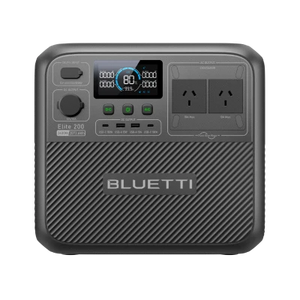
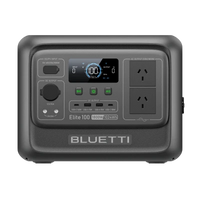


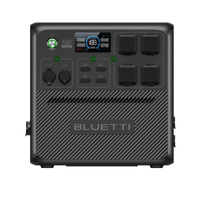
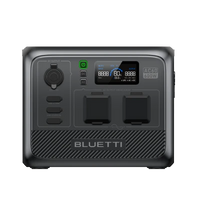
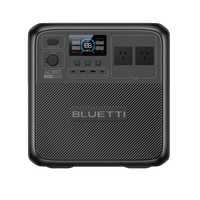






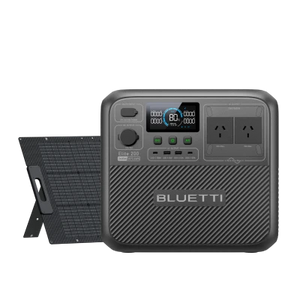


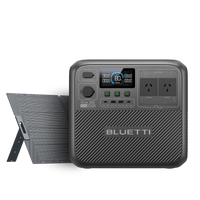
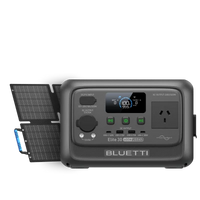










































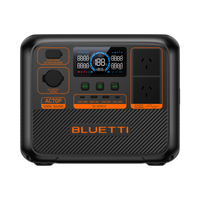


![[Phased Out] BLUETTI B80P Expansion Battery | 806Wh](http://www.bluettipower.com.au/cdn/shop/files/202310025B80P_2000-2000px_4_4caa0c1c-4dab-4272-9e9b-2b7507e5bd81.jpg?v=1713777870&width=200)
![[Phased Out] BLUETTI B210P Expansion Battery | 2,150Wh](http://www.bluettipower.com.au/cdn/shop/files/2_08cf9ef3-03a4-4489-b641-d3edb8094896.webp?v=1716016566&width=200)
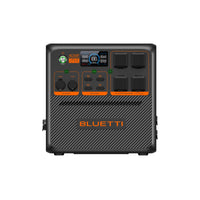
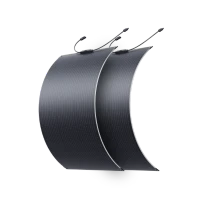
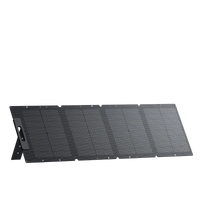
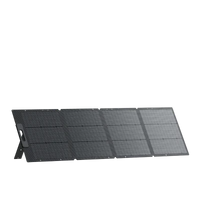
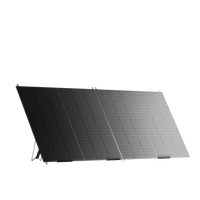

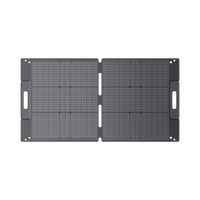


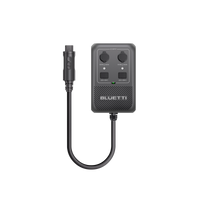








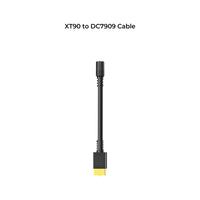




















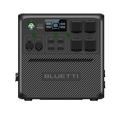








































































![[Phased Out] BLUETTI B80P Expansion Battery | 806Wh](http://www.bluettipower.com.au/cdn/shop/files/202310025B80P_2000-2000px_4_4caa0c1c-4dab-4272-9e9b-2b7507e5bd81.jpg?v=1713777870&width=120)
![[Phased Out] BLUETTI B210P Expansion Battery | 2,150Wh](http://www.bluettipower.com.au/cdn/shop/files/2_08cf9ef3-03a4-4489-b641-d3edb8094896.webp?v=1716016566&width=120)
